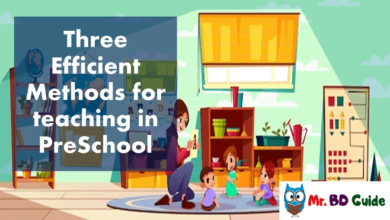How to Create Grading Rubrics Using Focus Points?

As you know what the assignment is, but do you know about assignment rubrics? It is a marking criteria tool or a set of guidelines to evaluate an assignment. It is beneficial to explain a scholar the exact requirements and acceptable performance standards.
A grading scale benefits both the teacher and the students. Having a good understanding of each others’ strengths and weaknesses is beneficial.
But, the process requires a few apt skills. For the same, a team of experts is available to provide assignment help Sydney and make them acquainted with the grading rubrics.
6 Steps on How to Create Grading Rubrics
The mentioned steps will help you understand the rubric and its purpose in an assignment. It will give an insight into how it’s done in assessing papers or other academic documents.
Take a look to know-
Define the Purpose
There needs to be a purpose behind the rubrics’ design. Select a goal that addresses questions like what the assignment entails, how would it be judged, and the kind of feedback to give the students. The motive behind creating a rubric should be clear and precise.
Decide the Type
There has to be clear thought on the type of rubric to be used to grade the pupils’ performance. One is a holistic rubric, that uses the rating scale measured on the criteria of weak, satisfactory, and strong altogether.
Then there is an analytic rubric that uses a rating scale to demonstrate each criterion separately in the form of a grid or table.
A Defined Criteria
There has to be a guided list of norms to evaluate students. The list should be based on the skills required for an assignment and should not contain more than 6-7 evaluation points.
To define the grading scale, the evaluator should understand the learning objective through prior-made grading checklists, past analysis of students’ work, or the assignment prompt usage.
It could be gained by talking to the students directly or discussing with colleagues.
Create Rating Scale
Now, it is where the analysis happens, faculty decides on the type of score for marking the students based on the mastery level they have acquired.
The scale has 3-5 levels to rate a candidate’s performance based on what they demonstrate.
The scale should be clear, understandable and could be exhibited from highest to lowest or vice versa as per the choice. The rating could be of numbers or small description labels.
Mention Descriptions
In this step, a rubric is crafted with little descriptions for every criterion based on the performance level.
The narrative should be logical and measurable. The language used has to be clear for students’ understanding.
It helps students to get acquainted with the evaluator’s expectations and to know their performance level. The table should include the degree to which the standards are met.
Revise the Rubric
After mentioning the descriptions for each level, revise your rubric and limit it to a single page only. It should not be crowded with too many parameters as it would be difficult to assess all at once.
It is specifically framed to grade a student’s performance and should be based on their understanding. Try to take feedback from your colleague for better efficiency.
Modification is possible before handing out depending on the requirement but no change after its distribution.
Know the Last Thought
You might not have ever heard about the construction of a rubric. Did you know about it or its purpose in education? If not, then anticipate a thorough read of the above post.
A rubric is an effective tool that helps students and professors to communicate expectations, provide feedback, and grade academic documents. A good one needs an eye for precision to obtain desired results.
Yet, confused about the terminology and its purpose? You can browse to seek expert guidance to avail assignment help Sydney. The professionals are skilled in different genres and religiously assist you in every way possible, leaving no scope for doubts.




![SSC Routine 2020 PDF Download [All Education Board] 6 SSC Routine Featured Image](https://mrbdguide.com/wp-content/uploads/2020/01/SSC-Routine-Featured-Image.jpg)